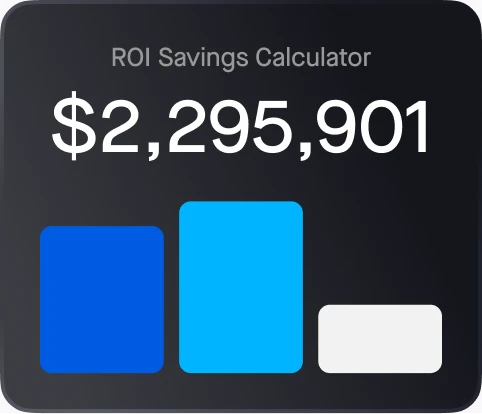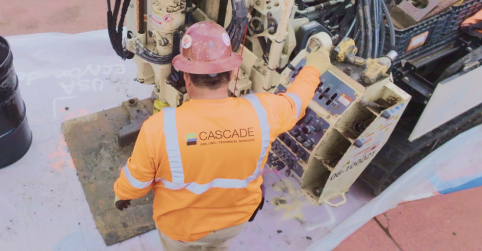With Donald Trump securing the presidency in the 2024 U.S. election, change is on the horizon. As the new administration takes hold, commercial transportation businesses should expect spending cuts, more deregulation, and a business-minded approach.
In the run-up to the election, President-elect Trump emphasized support for fossil fuels, limiting federal regulation, and using traditional energy sources over green energy. Now he’s ready to deliver. With Republican majorities in the Senate and the House, the legislative landscape is sure to align with the new administration’s pro-business priorities. Here’s what commercial fleets can expect under the next Trump administration.
1. Executive branch: What the regulatory outlook has in store
Through the executive branch, the Trump administration will promote economic growth by scaling back regulatory restrictions. With the Department of Transportation (DOT) and Department of Labor (DOL) shifting under more conservative leadership, expect important changes like those below.
Environmental regulations and energy policy
The prediction: Trump’s approach to energy favors traditional fossil fuels produced in the United States. The emphasis on rapid green energy adoption, which is typically more dependent on other parts of the globe, will be scaled back.
The impact: Under the Trump administration, expect the Environmental Protection Agency (EPA) to roll back emissions standards for commercial fleets, making it easier to continue using diesel without shouldering the costs associated with newer technologies. For companies using older vehicles, the new approach could have a positive impact on companies’ bottom lines. To meet federal or state standards, businesses won’t have to invest so much in vehicles that run on alternative fuels. However, rolling back emissions standards could slow the transition to cleaner energy, potentially putting U.S. transportation companies at a disadvantage in global markets focused on sustainability.
Labor and safety regulations
The prediction: Under Trump, don’t be surprised if the Department of Labor rolls back worker protections or loosens regulations that affect the transportation industry. Policies that require mandatory breaks, or that reclassify independent contractors as employees, have become quite contentious for last-mile delivery services and trucking companies. The new administration plans to move away from these requirements.
The impact: Moving forward, there will be little appetite for stricter labor laws that regulate driver classification, wages, and benefits. As a result, companies will be able to continue using independent contractors, potentially saving on labor costs. Meanwhile, the Occupational Safety and Health Administration (OSHA) could adopt a more business-friendly stance, scaling back oversight on safety inspections and compliance checks so companies can manage safety protocols internally.
Infrastructure investment
The prediction: Trump has long advocated for more investment in infrastructure. However, his approach leans heavily on public-private partnerships (PPPs) instead of massive federal spending. Because PPPs are focused on return on investment, they’re less likely to build in more remote, rural areas.
The impact: Metropolitan areas and routes with heavy traffic may see greater investment under Trump as a result — including investment in 5G technology.
2. Legislative Branch: Republican-controlled Senate and potential House influence
With Republicans holding the Senate and the House, policies will align closely with the president’s pro-business platform. Here’s how the most notable policies could be affected.
Infrastructure bills
The prediction: The Republican-led Senate and House will support infrastructure spending, but not at the levels of previous administrations. Bills with significant public-private partnerships or provisions for reduced environmental oversight on construction projects are likely to pass.
The impact: With House Republicans backing Trump’s infrastructure agenda, it will likely lead to moderate investment in highways, ports, and freight corridors. With the massive Infrastructure Investment and Jobs Act passed under Biden now coming up for renewal under the Trump administration, expect a concerted effort to roll back federal spending and have it become more targeted.
Climate and energy legislation
The prediction: With Republicans in control, the push for aggressive climate-focused legislation will likely stall.
The impact: Clean energy initiatives and mandates for commercial transportation companies to transition to low-emission vehicles will be more measured or delayed, allowing companies to minimize investment in green energy without penalty. While a move like this might cut operational costs temporarily, it would leave U.S. fleets lagging behind their international counterparts as global markets move toward greener logistics standards.
Technology and autonomous vehicles
The prediction: Republicans generally favor innovation with few regulatory constraints. With that in mind, Congress may support autonomous vehicle testing and development, potentially creating favorable conditions for commercial fleets interested in automation.
The impact: With minimal restrictions, AV companies may see faster progress in deploying semi-autonomous technologies within the trucking sector. However, without additional safety and workforce regulations, widespread adoption will take time as companies balance innovation with practical deployment needs.
3. Judicial Branch: Shaping long-term industry norms
Considering the conservative judicial appointments made during the previous Trump administration, and the potential for additional appointments in his upcoming administration, the Supreme Court and lower federal courts will probably take a conservative stance in interpreting cases relevant to the transportation industry.
Here’s a look at how key issues might be affected by a conservative judiciary:
Labor classification and worker rights
The prediction: Under the new administration, legal challenges surrounding gig economy workers should persist, as states push for clearer guidelines on independent contractor classification.
The impact: Given the current conservative judicial lean, the Supreme Court may favor rulings that maintain flexible contractor status, giving transportation companies more freedom to operate within gig-style models. This would be beneficial for companies like last-mile delivery services and ride-share firms, although worker advocates may continue to push for reform at the state level.
Environmental regulation challenges
The prediction: The conservative judiciary could influence rulings on federal and state environmental regulations affecting commercial transportation. If states attempt to enforce stricter emissions standards, court challenges could arise, potentially limiting state authority to impose standards that exceed federal statutes.
The impact: Successful challenges would generate a consistent regulatory environment across the country. However, they might prevent more environmentally conscious states from enacting progressive measures for commercial vehicles.
Data privacy and technological compliance
The prediction: The judiciary will also play a role in interpreting data privacy laws, especially as connected vehicles become more common in the industry. With conservative judicial leanings, rulings may favor corporate control over operational data, giving companies more freedom to use driver and vehicle data for route optimization and efficiency without strict compliance requirements.
The impact: Moves like this could raise privacy concerns, spurring additional state legislation to protect drivers’ data rights. Expect to see a continued focus on cybersecurity measures to protect business data and minimize the influence of fraud and exploitation.
Nuclear verdicts and tort reform
The prediction: A GOP-controlled Congress and a judiciary with a conservative mindset — including the Supreme Court — could significantly impact nuclear verdicts and the broader landscape of tort reform in commercial transportation.
Historically, Republicans and conservative judges tend to advocate for policies and rulings that limit the scope of civil liability and promote economic stability for businesses. A GOP-led Congress might push for federal legislation to cap punitive damages in civil cases; standardize liability rules; or enhance preemption of state laws that allow for large jury awards.
The impact: All of this could reduce the prevalence of nuclear verdicts, particularly in industries like trucking, which are highly vulnerable to litigation.
Conservative federal and Supreme Court judges often favor interpretations of the law that restrict judicial activism and prioritize strict adherence to statutory language. This adherence can discourage more expansive interpretations that often lead to inflated awards. The judiciary could also uphold tort reform measures as constitutionally valid, countering potential challenges from trial lawyers or states.
Overall, the combination of a more conservative judiciary and GOP control of the White House and Congress may create a legal environment more favorable to businesses. If so, it would reduce litigation risks and make the outcome of liability cases easier to predict. However, critics might argue that the ability of plaintiffs to receive fair judgments will be compromised, and business incentives to prioritize safety may be reduced.
4. The impact of the Chevron decision
When the Supreme Court recently made this landmark ruling, they limited the authority of federal agencies to interpret ambiguous statutes on their own, without clear Congressional authorization. Here’s how the ruling’s impacts might be felt going forward.
Reduced regulatory uncertainty
The prediction: The Chevron decision means that federal agencies like the Department of Transportation (DOT) and Environmental Protection Agency (EPA) will have less freedom to interpret ambiguous rules.
The impact: Limiting interpretation could cut back the regulatory uncertainty that has challenged companies, as agencies will need clearer Congressional mandates before imposing major new requirements. As a result, we could see more predictable, and more stable, regulatory conditions, allowing companies to plan with greater confidence.
A potential slowdown in environmental and safety mandates
The prediction: Agencies will face greater limitations in setting aggressive emissions standards or safety requirements without explicit direction from Congress.
The impact: Agencies like the EPA may find it more challenging to impose stringent emissions standards, or to mandate certain technologies for specific engine types, benefiting companies that rely on traditional fuel sources. However, this could also slow the transition to greener technologies, potentially impacting competitiveness over time.
A shift in influence to state-level regulations
The prediction: With federal agencies constrained in their regulatory power, states may take on a more significant role in setting environmental and safety standards.
The impact: More state involvement could lead to a patchwork of regulations across the country, especially in states with stricter policies that might impose their own emissions or labor standards, such as California. For companies operating across state lines, the differences could complicate compliance and increase operational costs.
Conclusion
The 2024 election results are set to usher in a period of deregulation and pro-business policies in the commercial transportation industry. Under the Trump administration, we can expect a rollback of environmental and labor regulations, moderate infrastructure improvements, and a more lenient stance on worker classification that benefits companies that rely on independent contractors.
Although some state-level reforms may attempt to counter these federal moves, the overall industry landscape will favor flexibility, lower costs, and conservative growth over rapid transformation. As a result, transportation companies will be able to focus on expansion and profitability, even as they navigate the complexities of a slower transition to green and automated technologies.




